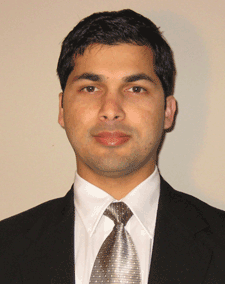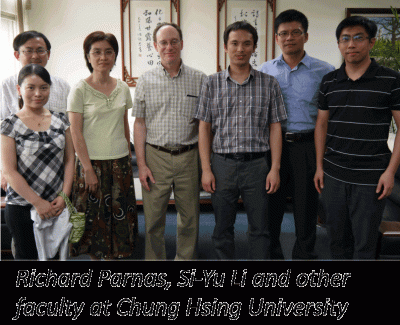 Dr. Yong Wang of CMBE was recently awarded a competitive National Science Foundation CREATIV (Creative Research Awards for Transformative Interdisciplinary Ventures) grant. CREATIV, a pilot grant system part of the INSPIRE (Integrated NSF Support Promoting Interdisciplinary Research and Education) initiative, seeks to promote innovative and interdisciplinary projects in the areas of science, engineering, and education research. Dr. Wang is one of up to forty recipients selected to receive this grant in its inaugural year.
Dr. Yong Wang of CMBE was recently awarded a competitive National Science Foundation CREATIV (Creative Research Awards for Transformative Interdisciplinary Ventures) grant. CREATIV, a pilot grant system part of the INSPIRE (Integrated NSF Support Promoting Interdisciplinary Research and Education) initiative, seeks to promote innovative and interdisciplinary projects in the areas of science, engineering, and education research. Dr. Wang is one of up to forty recipients selected to receive this grant in its inaugural year.
Dr. Wang’s winning project will use molecular nano-manufacturing strategies to develop materials that have the capability to flexibly change properties, in ways similar to that of a living organism. If successful, this will open the door for the creation of a host of smart materials that are not found in nature. The success of this project will also meet the goal of the Materials Genome Initiative launched by President Obama in 2012.
 Hom Sharma, a Ph.D. candidate from the CMBE department, has received a highly competitive and prestigious Science to Achieve Results (STAR) Fellowship from The U.S. Environmental Protection Agency. This federal government award is limited to the country’s most outstanding graduate students in environmental science-related fields. The fellowship provides $126,000 over a three-year period to cover full tuition, a stipend, and research expenses. The fellowship has been awarded to the proposal titled “Computational and experimental investigation of catalyst deactivation to design sulfur resistant emissions oxidation catalysts” submitted to EPA. Hom is the first graduate student to receive the EPA STAR fellowship from UConn School of Engineering.
Hom Sharma, a Ph.D. candidate from the CMBE department, has received a highly competitive and prestigious Science to Achieve Results (STAR) Fellowship from The U.S. Environmental Protection Agency. This federal government award is limited to the country’s most outstanding graduate students in environmental science-related fields. The fellowship provides $126,000 over a three-year period to cover full tuition, a stipend, and research expenses. The fellowship has been awarded to the proposal titled “Computational and experimental investigation of catalyst deactivation to design sulfur resistant emissions oxidation catalysts” submitted to EPA. Hom is the first graduate student to receive the EPA STAR fellowship from UConn School of Engineering.

 A series of meetings with the governor’s Minister of Industry, the mayor of Jin Chuan city (where the complex is located), and the 10 CEOs of the companies involved in the complex illustrated the fast pace of development that is possible when public / private partnerships are executed with a cooperative attitude.
A series of meetings with the governor’s Minister of Industry, the mayor of Jin Chuan city (where the complex is located), and the 10 CEOs of the companies involved in the complex illustrated the fast pace of development that is possible when public / private partnerships are executed with a cooperative attitude.



